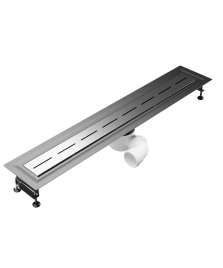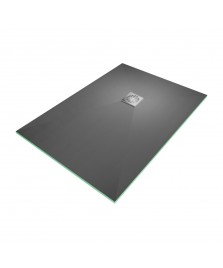- today
- perm_identity Chris Miller
- label Wet Room Kits
- favorite 0 likes
- remove_red_eye 1556 views

In the realm of modern home design, walk-in showers have emerged as a beacon of accessibility and style. These showers, designed with a keen focus on ease of use, are more than just a bathroom feature. With features such as step-free wet room shower trays, wide entrances and accessible shower controls, they represent a commitment to inclusivity and freedom for those with limited mobility.
What Is a Walk-In Shower?
Walk-in showers, as the name suggests, are showers that one can simply walk into without the need to step over a high threshold. They are typically designed with step-free entry and level access shower trays, making them especially suitable for individuals with mobility challenges.
Unlike traditional showers, which often come with cumbersome doors or curtains, a walk-in or disabled access shower also offers an open design, providing an unobstructed entry and exit. This design not only enhances accessibility but also imparts a contemporary, spacious feel to any bathroom.
Who Benefits from Walk-In Showers?
Many of us face difficulties with using traditional showers. Walk-in showers eliminate barriers, making showering a safer and more comfortable experience for all. Some examples of individuals who may particularly benefit from walk-in showers include:
-
Older adults who may have problems with balance, strength, mobility or motor control
-
People with physical disabilities or health conditions such as arthritis and fibromyalgia
-
Wheelchair users
-
Young children who are still developing their coordination and balance
-
Blind and partially sighted people
In the commercial realm, businesses and property developers are recognising the value of the walk-in shower for disabled clients. Installing them in hotels, leisure centres and rental properties not only ensures building regulations and accessibility legislation is met, but also enhances the appeal to a broader clientele, ensuring everyone feels catered for.
The Importance of Walk-In Showers for Freedom and Independence
The ability to carry out daily activities independently holds profound psychological and emotional significance. With a walk-in shower, disabled individuals can practise personal hygiene without assistance, fostering a sense of dignity, self-worth and confidence. It's not just about the physical act of showering: it's about the autonomy and the freedom to do so on one's own terms.
A well-designed, accessible bathroom can drastically improve quality of life for older adults and those with mobility challenges. It eliminates the daily hurdles they face, allowing them to start or end their day on a positive note. Walk-in showers, with their emphasis on ease and safety, epitomise this approach to inclusive design.
Key Components of a Walk-In Shower
A walk-in shower is a carefully designed area that prioritises safety, accessibility, and comfort. The essential components that define a walk-in shower include:
-
Low or zero-threshold entry: Step-free access ensures that users can walk or wheel into the shower without any obstructions.
-
Non-slip flooring: This helps to reduce the risk of slips and falls.
-
Open design or wide shower doors: For disabled individuals, walk-in showers often feature extra-wide doors or are entirely open, ensuring easy access. When doors are used, they are typically sliding or outward-opening to maximise space.
-
Easily accessible controls: Shower controls are placed within reach and are easy to use, ensuring individuals can adjust the water temperature and flow without difficulty.
Weight-bearing grab rails and shower seats, while not strictly necessary for a walk-in shower, can also provide additional support and stability for those with disabilities. With the right components in place, a walk-in disabled shower can transform a bathroom into a sanctuary of comfort and safety.
Walk-In Showers vs Wet Rooms: What's the Difference?
It’s important to note that while they both offer disabled access, walk-in showers and wet rooms are not the same thing. Walk-in showers are a type of shower enclosure separated from the rest of the bathroom, often with a shower screen or door, and a low or level access shower tray. On the other hand, wet rooms are entirely waterproofed rooms where the wet room shower tray seamlessly integrates with the rest of the floor, and there is no door or barrier to the shower area.
Wet rooms offer a more open, flexible and wheelchair-friendly layout but can be more expensive, requiring comprehensive waterproofing of the entire room to prevent water seepage. Step-free showers are typically a more budget-friendly option. However, the cost may vary significantly depending on the specific fittings and materials chosen.
Invest in a Walk-In Shower Today with Wetroomstop
The journey towards creating an accessible and stylish bathroom begins with understanding the value of features like walk-in showers. At Wetroomstop, we pride ourselves on offering a comprehensive range of products tailored for accessible bathrooms, including wet room shower trays, walk-in shower enclosures, flooring solutions and more.
Whether you're a homeowner or landlord looking to renovate, a business owner or a tradesperson seeking quality products, our extensive range and exclusive tradesperson discounts guarantee the best quality products at competitive prices. Take a step towards freedom: visit the Wetroomstop website today or contact us to learn more.















